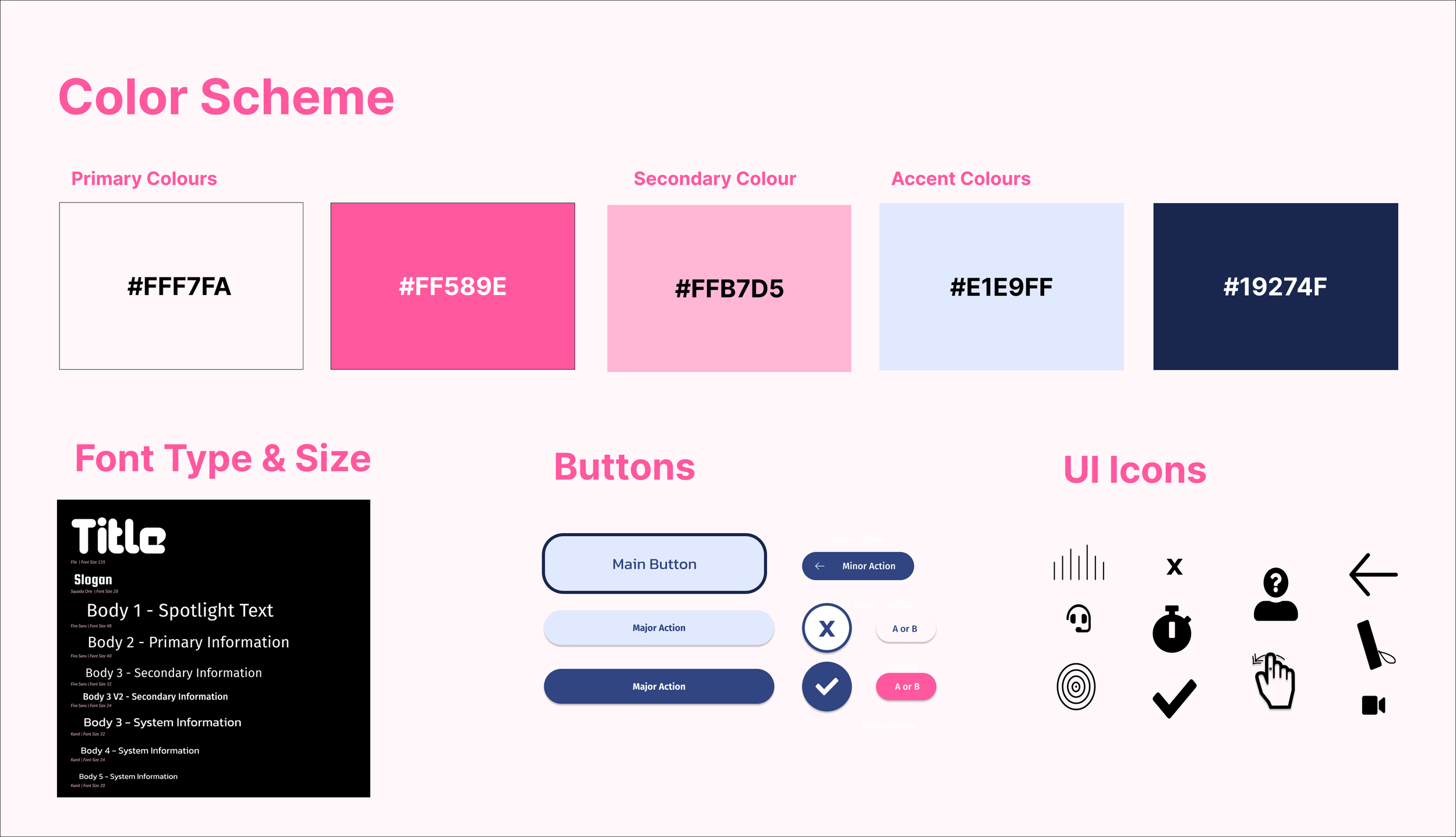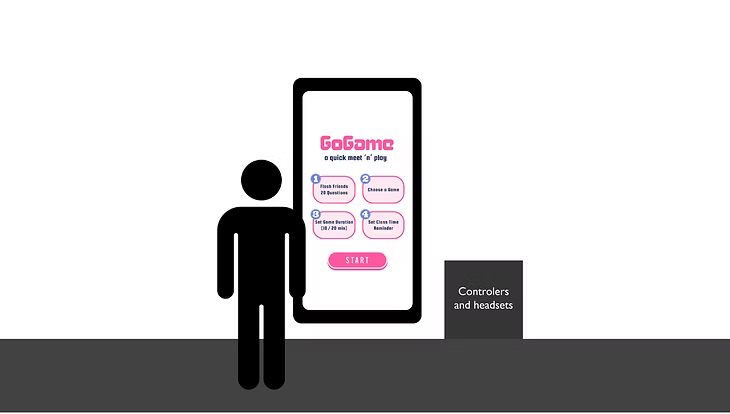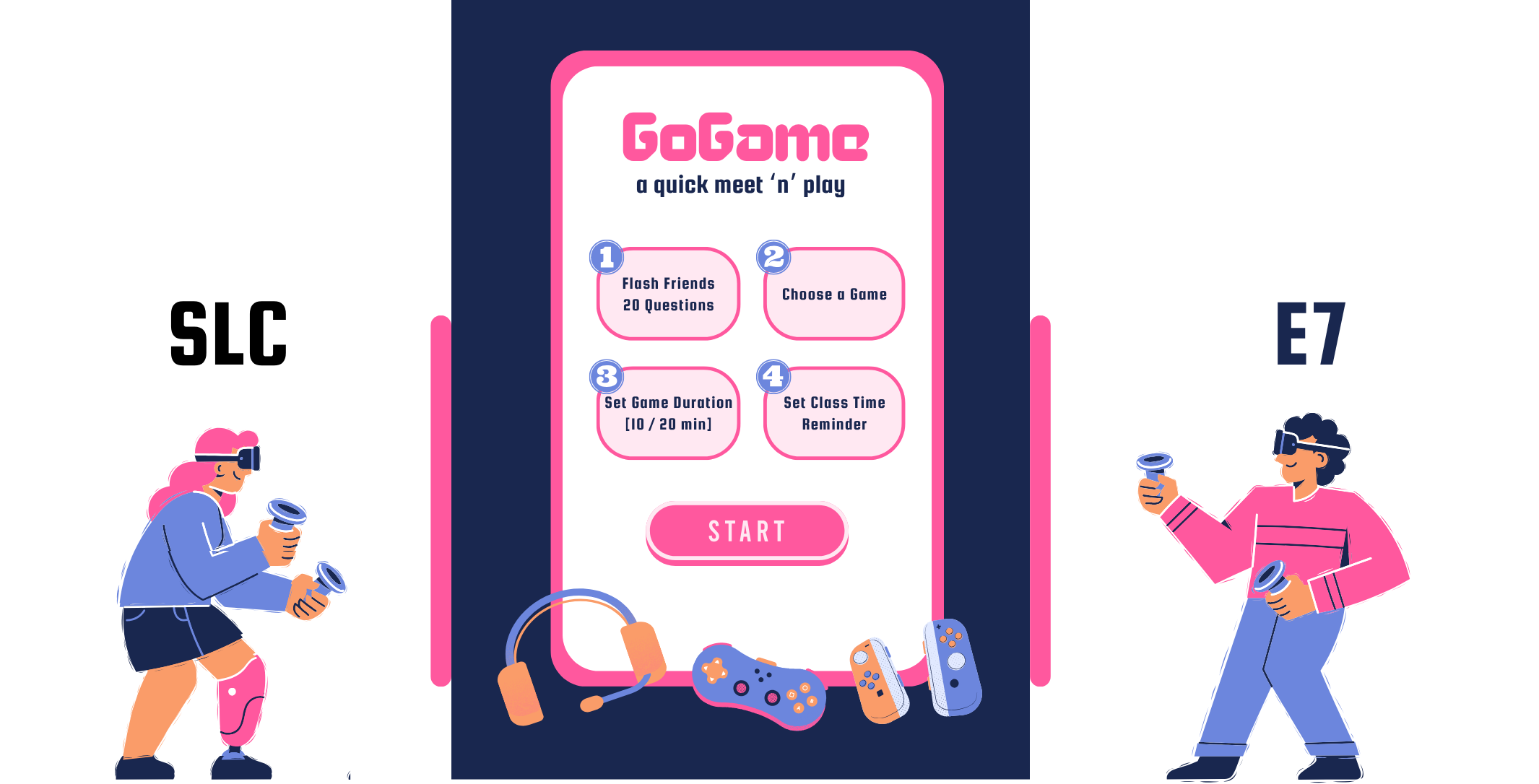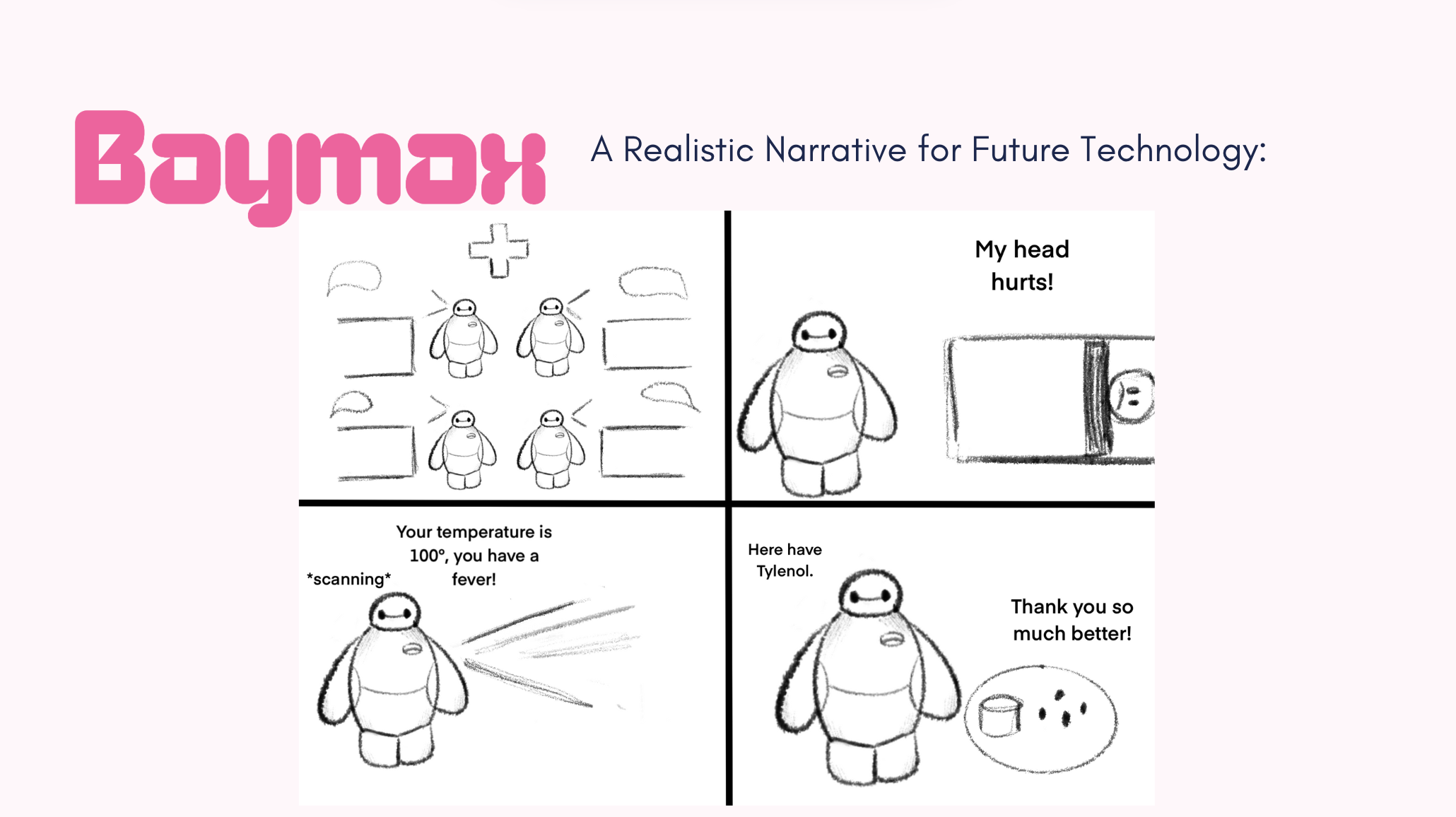International students face mental health issues that most commonly stem from loneliness from adjusting to a new place by themselves.
Mental health is not one of the easiest things to figure out; however, designing a safe space for it can help ease the constant toll of it.
Problem
With the main focus being on international students struggling with feelings of loneliness, our solution was GoGame, a system that allows international students to de-stress, skip awkward introductions, and compete in mini-games! In the process of doing so, they can meet new people and have fun.
Solution
UX Designer
Team Project
Sept 2023-Dec 2023
Role
Brandkit
GoGame’s visual identity was designed to be bold, energetic, and playful, reflecting its mission to make casual gaming more immersive and social.
The branding uses a vibrant colour palette, geometric shapes, and a dynamic logo to capture the thrill of gameplay while maintaining clarity and accessibility across digital platforms.
The overall system creates a consistent and engaging experience that resonates with both first-time users and returning players.
Phase 1: The Initial Discovery
An interactive GoGame screen will be situated in two busy locations on campus: The SLC and E7 atriums.
Students on both sides will be able to communicate via headsets and camera to choose a mini game (including arcade games, online sports, digital board games, etc)
They’ll have access to different controllers and VR gears depending on the game.
GoGame underwent multiple design iterations grounded in user feedback and testing. We began by deeply exploring the problem space through primary and secondary research, identifying gaps in current gaming experiences. This led to the development of user personas that reflected a diverse range of player motivations, behaviours, and accessibility needs.
We conducted a competitive analysis using media sources to understand how similar gaming environments approached immersion and interactivity. Based on these insights, we ideated and prototyped various installation formats—including interactive screens, immersive room-scale setups, and VR-based experiences. Each concept was evaluated through user testing sessions to refine the experience, ensuring that GoGame was not only engaging but also intuitive and inclusive for all players.
The Approach
We approached the design brief by deciding to look at root causes, finalizing the issue of loneliness amongst international students.
Phase 2: The Research & Ideation
To guide our design decisions and ensure we stayed user-centred, we created detailed personas based on research insights and user interviews. These personas captured a range of player types—casual gamers, competitive players, and social explorers—each with unique motivations, pain points, and accessibility needs. By grounding our ideation in these personas, we were able to design interactive experiences that felt engaging, intuitive, and tailored to real user behaviors.
According to 1 study, “96% (615/640) of international students aged under 40 years reported loneliness”, (Kangning Zheng et al.)
To analyze the competitors for GoGame, we were required to look at media productions in futuristic movies that could be compared to our idea, along with futuristic scenarios on how that physical product could be used.
Future scenario where it would be used:
Created as a healthcare assistant to help provide physical and mental health, and alleviate loneliness.
Ethical considerations:
Privacy concerns (especially if it’s public, it stores multiple people’s health data, where would that go?)
How can it be integrated in the future?
The robot can either be a personal assistant (following its owner) or be situated in public places. It can be sent for emergency aid.
Phase 3: The Designs & Why
Low-Fidelity PrototypeHigh-Fidelity PrototypeCategorized data into 6 different categories:
Navigation/Instruction
Preferred Features
User Control
Design
Overall User Experience
Suggestions
Learnings & Outcomes
Through multiple user testing sessions, we gained valuable insights that directly informed design improvements and next steps for GoGame.
What worked well:
Users found the navigation intuitive, and the presence of clearly labelled “exit” buttons gave them a strong sense of control throughout the experience. The visual design was described as clear, playful, and engaging, aligning well with our intended branding. Notably, the “timer” feature stood out as essential—it helped users feel a sense of pace and purpose during gameplay. Overall, participants responded positively to the core concept and interactivity, reinforcing our direction.
Areas for improvement:
Testing also revealed several key opportunities. Users requested larger camera screens to better see themselves and others, which would increase immersion. Many wanted the ability to reconnect with players after a game, highlighting a need for more social continuity in the experience. Buttons and CTAs needed to be more prominent in certain areas to improve clarity and interaction speed. Lastly, participants expressed interest in a more advanced prototype, suggesting the integration of a headset, remote controller, and expanded game library to make the interaction feel more complete and immersive.
These findings emphasized the importance of balancing playful interaction with functional depth and flexibility. Moving forward, our focus will be on enhancing visual feedback, social features, and exploring more immersive hardware options to elevate GoGame from a fun concept to a fully interactive experience.













